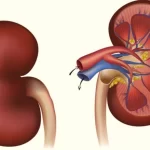Underlying causes of Secondary Nephrotic Syndrome
It is important to treat carefully the underlying causes of secondary nephrotic syndrome. The most common underlying causes of secondary nephrotic syndrome is such as diabetic kidney disease, lupus kidney disease, amyloidosis, etc. This is a major primary cause of secondary nephrotic syndrome. Treatment of these disorders is necessary to control the nephrotic syndrome.
Secondary Nephrotic Syndrome General advice
Secondary Nephrotic syndrome is a disease that lasts for many years. The patient and his family (family) should have proper and adequate knowledge about the nature of the disease and the treatment to be taken for its prevention and its side effects, prevention of infection and benefits of early treatment. The patient needs extra care when the body is swollen during relapses.
It is necessary to pay attention to the fact that during illness, the patient should be treated as a normal child.
In the case of secondary nephrotic syndrome, adequate screening should be done before starting steroid therapy.
Children with nephrotic syndrome may suffer from other infections. Prevention, early detection, and treatment of nephrotic syndrome are extremely important. Because infection can exacerbate controlled disease (even when the patient is undergoing treatment).
To avoid infection, the family and child should make a habit of drinking clean water and washing it thoroughly. Crowded areas should avoid contact with infectious patients. Regular vaccination should be advised when the steroid course has been completed.
Secondary Nephrotic Syndrome Monitoring and checking
The secondary nephrotic syndrome probably lasts for a long time (several years). Therefore it is necessary that it should be checked regularly as per the advice of the doctor. During the examination, the doctor evaluates the loss of protein in the urine of the patient, weight blood pressure, side effects of the drug and any complication.
The patient should keep his weight and keep a record of it. The weight chart helps to monitor the increase or decrease in the amount of water in the body.
The family should learn to test urine regularly for protein, at home. Apart from this, detailed information on all urine tests, its results and description and dosage of all medicines should be taught in the diary. This helps to predict the recurrence of the disease which is helpful for treatment.
What does prednisolone work for and how is it given?
Prednisolone is an effective drug to inhibit protein secretion in urine. The amount to be given to this medicine is determined by the doctor keeping in mind the weight of the child and the severity of the disease.
For how long and how to take this medicine, it is decided by the specific doctor. The intake of S medicine stops the passing of protein in urine within one to four weeks in most patients.
To prevent the recurrence of recurrent disease, the prescribed medication should be taken for the entire duration as per the doctor’s advice.
The supervision of doctors is very important to reduce the adverse effects of prednisolone.
Fear of side effects of prednisolone should not make the mistake of abandoning treatment.
Effect of prednisolone drug
The main drug used to treat secondary nephrotic syndrome is prednisolone. But this medicine also has some side effects. To reduce these side effects, it is advisable to use this medicine only under the advice and supervision of a doctor.
Short-term side effects:
More hunger, weight gain, acidity (burning sensation in stomach and chest), irritability in nature, increased chances of infection, increased blood pressure and increased crying in the body.
Long-term adverse effects:
The decreased growth of children (increase in length), weakening of bones, pulling of the skin from the thigh and lower part of the abdomen, pink streaks, cataract, etc.





